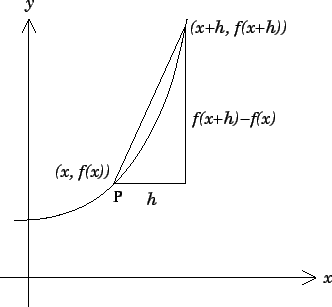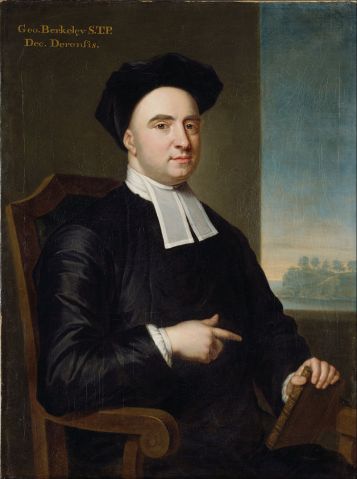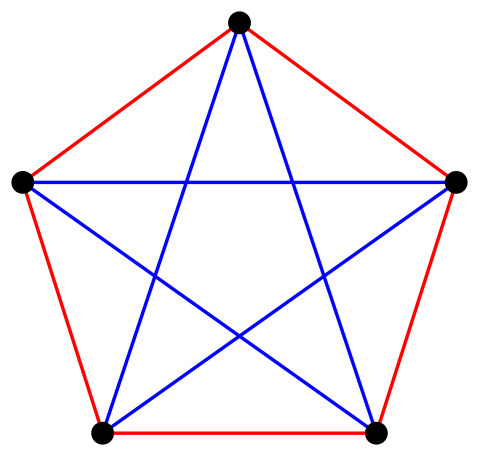In a recent post, we considered the history of the infinitesimal in calculus, from its central and controversial role in the original formulations of Newton and Leibniz to its banishment in the 19th century through the introduction of the limit. Today, we move forward to the mid-20th century, when the use of infinitesimals in calculus was finally put on a rigorous (and elegant) foundation by Abraham Robinson and his development of what came to be known as non-standard analysis.

The basic idea is as follows: first, we will construct an extension of the standard real numbers, which will be called the “hyperreals.” The hyperreals will contain all of the standard real numbers but will also contain infinitesimal and infinite elements. Then, to perform basic calculus computations (such as taking derivatives), we will make use of the infinitesimals in the hyperreals and then translate the result back to the familiar world of the standard real numbers.
Let us now construct the hyperreals, which we denote by . To do this, let
be any non-principal ultrafilter on
. Let
be the set of all functions from
to
. If
and
are elements of
, then we say
if
and
take the same values on a large set, or, to be more precise, if
.
Speaking somewhat imprecisely, the hyperreals are the members of , where we say that two elements
are in fact the same hyperreal if
. (Speaking more precisely for those familiar with the terminology, the hyperreals are the equivalence classes of
modulo the equivalence relation
.) We want to think of the hyperreals as extending the standard reals,
, so, if
, then we identify
with the constant function
, defined so that
for all
.
We also want to be able to do everything with that we can do with
. For example, we want to be able to say if one hyperreal is less than another, and we want to be able to add, subtract, multiply, and divide hyperreals. We do this as follows.
First, for , we say
if
. We similarly define
,
, and
. Since
is an ultrafilter, if
, then exactly one of the following three statements is true:
Thus, we can order the hyperreals by (we haven’t shown that
is in fact a linear ordering on the hyperreals; one piece of this will be done below and the rest left to you). Moreover, this ordering extends the usual ordering
of the real numbers, since, if
and
, then clearly
.
The arithmetic operations are defined pointwise. For example, is defined to be the function from
to
such that, for all
,
. Subtraction, multiplication, and division are defined in the same way. With division, we must be slightly careful with regards to division by zero. The details are unimportant for us, but let me just say that we can define the quotient
for any
provided that
. In order to check that these operations are in fact well-defined, we would need to show, for instance, that, if
and
, then
, and so on. I will leave this to the interested reader.
Here’s another imprecisely stated and important fact about the relationship between and
: a first-order sentence is true about
if and only if it is true about
. I will not define ‘first-order sentence’ here, but let me illustrate this by an example. We know that
, the usual ordering of the real numbers, is transitive, i.e. if
and
, then
(in fact, transitivity is one of the requirements for being called an ‘ordering’). Let us show that
is also transitive.
To do this, consider such that
and
. We must show that
. Let
and
. Since
and
, we know that both
and
are in
. Since
is an ultrafilter, this means that
. If
, then
and
, so, by the transitivity of
, we have
. Let
. We have shown that
and
. Therefore,
, so
.
Here’s a slightly more complex example: ‘for every , if
, then there is
such that
.’ This is of course true in
. To show that it is true in
, suppose we are given
such that
. We must find
such that
. Note that, since
, there is a set
such that, for every
,
. Thus, by the existence of square roots in
for every
, there is a real number
such that
. Define a function
by letting
for
and
for
. Then, for all
,
, so
, and we have proven that our sentence is true in
.
In addition to containing all of ,
also contains many non-standard elements, and among these are two very interesting types of hyperreals. First,
contains infinite elements, i.e. elements that are larger in magnitude than every standard real number. As an example, consider the function
defined by
for all
. To see that
is larger than every standard real number, consider a number
, and let
be the least natural number such that
. Then, for every natural number
,
. Since
is a non-principal ultrafilter,
, so
. Such an
is a positive infinite element. Analogously,
also contains negative infinite elements.
Second, contains infinitesimal elements, elements that are non-zero but are smaller in magnitude than any standard real number. An easy way to see this is simply to take the reciprocal of an infinite element: if
is positive and infinite, then
(or
, more precisely) is positive and smaller than any positive real number. If
is the infinite element defined above, then
is the function
defined by
for all
.
An important fact about is that, although it contains many non-standard elements, every hyperreal is either infinite or infinitely close to a standard real number (where we say that a hyperreal
is infinitely close to a hyperreal
if
is either
or infinitesimal). We can therefore define the standard part of a hyperreal
(denoted by
) as follows:
- if
is positive and infinite, then
;
- if
is negative and infinite, then
;
- if
is finite, then
is the unique
such that
is
or infinitesimal.
We are now ready to do calculus with infinitesimals! Let us show, for example, how to compute a derivative. Recall that, in its original formulation, the derivative of a function at a real number
(denoted
) was defined to be:
,
where is infinitesimal. Now that we have a solid theory of infinitesimals, this is (almost) exactly the formula we will use! The only issue is that the result of this calculation will be a hyperreal, whereas we typically want answers in the standard real numbers. Therefore, we say that
, if it exists, is equal to:
,
where is an infinitesimal hyperreal. To illustrate this, let’s compute the derivative of
. Let
be an infinitesimal hyperreal (for example, the function given by
. Then:
.
Since is infinitesimal, we have
, so, as expected,
.
The astute reader will note that the calculation we have done does not differ substantially from the calculation we would have carried out using the limit definition of the derivative. Although non-standard analysis has led to some new technical work, its appeal is in large part historical (setting the original formulations of Newton, Leibniz, and others on a rigorous foundation) and conceptual. Infinitesimals are (to me, at least) just nicer than limits. They seem more intuitively clear; they are more easily graspable by students; they’re more fun. And they’re made possible by the heroes of our story: ultrafilters.





